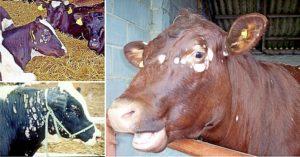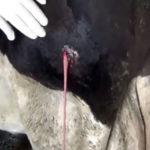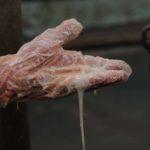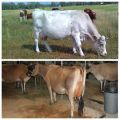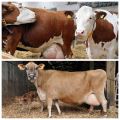How many days does a cow normally have a bloody discharge after calving and anomalies
Vaginal discharge in cattle can be observed before and after childbirth, this is normal physiological phenomenon, but in some cases it can indicate serious postpartum illness. In healthy individuals, the discharge is normal in composition, color, consistency, volume and duration. Consider why a cow has bloody discharge after calving, and how to effectively help her animal.
Discharge before and after calving
To determine whether prenatal and postnatal discharge is normal or not, you need to know what is considered normal, when such discharge begins and how long it lasts.
Discharge rate
Discharge or, as they are called lochia, in cows before childbirth is a transparent viscous liquid with the consistency of mucus. A characteristic odor may be present which is considered normal. This discharge signifies an early onset of labor and is intended to facilitate labor by reducing friction as the newborn passes through the birth canal.
When does pre-calving discharge start?
Lochia begins 12-15 hours before childbirth. This time period is typical for adult cows that have already given birth. In first-calf heifers, they can begin a day before calving. It is possible to determine the approach of calving by the swelling of the genitals and udder, the behavior of the animal changes, it becomes agitated, tries to move away from other animals, so as not to interfere. The cow hums, alternately lies on its side and gets up, looks back at its stomach.
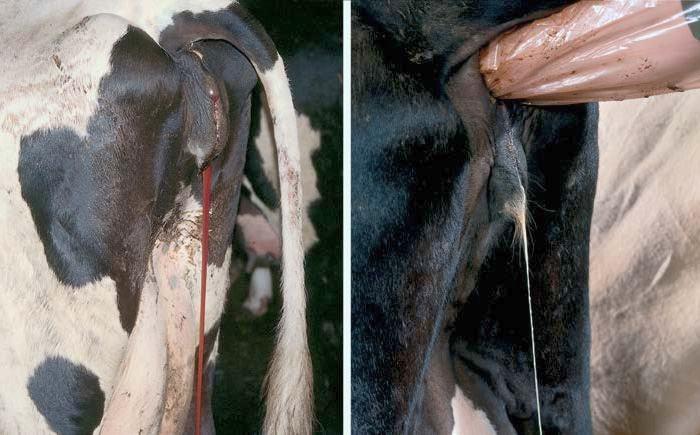
How long does a cow's discharge last after calving?
The postpartum period in cattle lasts quite long - 21-28 days. During this time, any discharge should completely end (from 2-5 days and up to a maximum of 2 weeks), and characteristic signs of a new sexual cycle should appear. During the first week, lochia is almost constant, then becomes less frequent.
Unusual discharge and their treatment
Discharge from pregnant cattle is not always normal, usually this indicates pathological processes and subsequent diseases, for example, endometritis, vaginitis, minor or serious vaginal injuries.
Changes may relate to the color, smell and density of lochia, they may contain inclusions of blood and pus.
White or yellow
If the cow has a whitish discharge, this is a sign of vaginitis, which develops due to inflammation in the vagina. Then they turn yellowish, the consistency becomes grainy, blood is shown in the secretions. Treatment consists in cleansing and rinsing the vagina with a disinfecting solution of potassium permanganate, treatment with streptocidal ointment or ichthyol, antibacterial therapy and taking supplements with vitamins and minerals.
Purulent
About a week after calving, purulent discharge may appear, which is characteristic of endometritis, which develops chronically, or purulent-catarrhal inflammation. Additional signs: bloody inclusions, putrid odor. With purulent inflammation, toxins are released into the cow's body, the animal becomes depressed, its temperature increases, and its appetite decreases. Treatment consists of injections of "Oxytocin" and the introduction of the drug "Rifapol" into the uterus.
Bloody or brown
Pink lochia after childbirth speaks of microvascular damage when the calf passes through the birth canal. They can recover on their own, but for speedy healing, you need to take some measures: wash the cow's genitals and tail, check the condition of the uterus and introduce a solution of potassium permanganate or "Furacilin". To prevent infection, the animal is given antibacterial vaginal suppositories.
Blood clots in the secreted lochia indicate possible uterine bleeding. This can happen during calving for various reasons: the calf can damage the uterus with its hooves, damage occurs with an incorrect presentation, incorrectly positioned legs of the animal. With an incorrect presentation, it is difficult for a cow to give birth to a calf on her own; in most cases, qualified assistance is required.
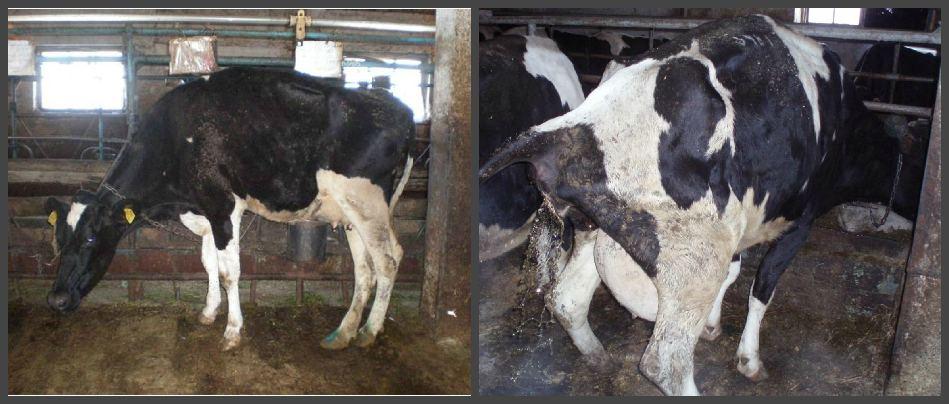
Treatment - the use of drugs that constrict blood vessels and provoke uterine contraction: intramuscularly "Oxytocin", intravenously 1% solution of ichthyol (for every 3 kg of mass 1 ml of the drug) and 10% solution of potassium chloride, which stimulates blood clotting. To strengthen the immune system, nutritional supplements are prescribed, for example, "Biozinc" or "Biocalcium" and vitamin complexes. These drugs are just an example, the treatment should be prescribed by a veterinarian.
Postpartum problems in cows cannot be treated on their own; all medications, dosage and treatment regimen must be selected by the doctor.
If the discharge with blood continues for some time after childbirth, then over time it becomes brown. This could indicate inflammation. Additional signs are an increase in temperature in an animal, loss of strength. Normal lochia may be absent, they appear only if you press on the uterine area.
With an unpleasant odor
An abnormal odor can accompany any pathological discharge, but especially often speaks of a purulent lesion. An increase in temperature, an increase in the frequency of respiration and heart rate are additional indicators of the pathological process. With such signs, you need to urgently seek veterinary help.
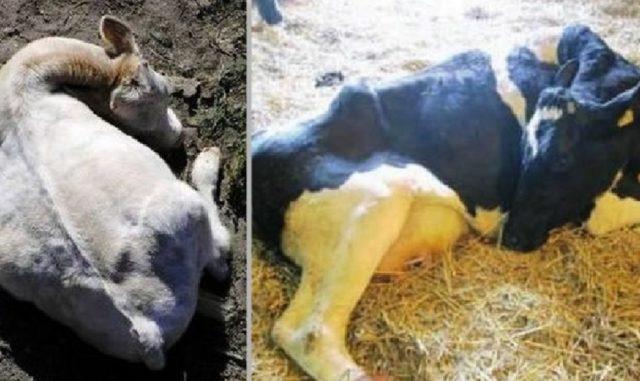
Problem prevention
If unusual discharge appears, you need to contact your veterinarian, only a doctor can make the correct diagnosis. It is impossible to treat on your own, without the appropriate knowledge and experience it is easy to harm the cow, and not help her. Before the arrival of the doctor, you can rinse the external genitalia with a solution of potassium permanganate, clean and disinfect the stall.
Preventive measures should be carried out throughout pregnancy, from the day of insemination to delivery. It is necessary to ensure that the animal is not injured, to limit contact with other cows, especially with sick ones.The cow must eat well, feed with poor quality feed is unacceptable, the diet must be balanced in nutrients. Daily walks on the street are mandatory so that the animal can move actively and receive the necessary doses of solar radiation. It is important that the animal comes up healthy, strong, with strong immunity by the time of birth.
All identified diseases, acute and chronic, must be treated on time and completely, without leaving the animal untreated. Vaginal discharge in cows can be both completely normal and a sign of a pathological process. In the latter case, the consequences will be difficult childbirth or postpartum complications. To distinguish the norm from pathology, you need to know what normal discharge looks like and be able to distinguish it from pathological.
